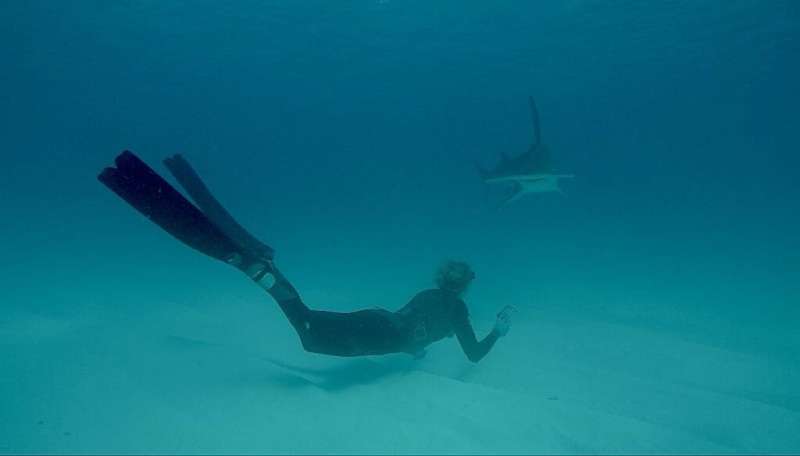Scientists track sharks picking DNA fragments from the sea

Marine ecologists have shown that traces of DNA in the sea can be used to monitor shark populations.
Current methods of baiting, hooking and filming sharks, rays and other large fish are invasive and costly and require teams of scientists spending much time at sea.
Now, a U.K. study, published today in Scientific Reports, has shown it is possible to monitor these animals via environmental DNA (eDNA), whereby a sample of seawater can provide the identifiable 'tracks' of numerous species of shark.
"Water contains minute fragments of the skin, excretions, blood of animals that have swum through there," explains Stefano Mariani, professor of conservation genetics at the University of Salford.
"It's just like when detectives do a forensic search of a crime scene, and can locate tissues and cells that contain the DNA of the suspects"
Almost half of all known shark species are classified as 'data deficient," in part, because of the expense and complexity of finding the animals in the first place.
"The beauty of our method is that we can get a picture of shark diversity without the need for chasing, baiting and hooking them – so it is a lot faster for conservation scientists and less traumatic for the animals," added Judith Bakker, the lead author of the study.
The team, which included scientists from six countries, from Europe and the Americas, took water samples in four sites in the Caribbean and three in the Pacific Coral Sea. Using a process called metabarcoding, the team recovered significantly more shark DNA sequences in less anthropogenically impacted areas. In the Caribbean, the most diverse site was the Bahamas (a shark sanctuary) where 11 species were identified; in the Pacific, the samples from the remote, inhabited archipelago of Chesterfield proved to contain the largest amount of shark DNA .
Bakker said: "To be able to glean so much information about these charismatic predators by simply sampling a few litres of water is truly astonishing."
"Sharks are vulnerable to overfishing, often have slow growth rate and low fecundity, and therefore are a flagship species in marine conservation.
And Professor Mariani believes this flexible and cheap new way of tracking sharks will help improve conservation: "In order to protect these elusive animals and their ecosystems, we must be able to rapidly assess many areas at repeated time intervals.
"eDNA should prove a big step forward because basically anyone can collect water samples, and every bottle of water is a potential gold mine of data.
Of course much remains to be done to make the approach more effective: the molecular tools can be improved, so that every species of interest can be identified unambiguously; and finer-scale studies are required to understand the impact of oceanic currents and depth on the transport of trace DNA."
More information: Judith Bakker et al. Environmental DNA reveals tropical shark diversity in contrasting levels of anthropogenic impact, Scientific Reports (2017). DOI: 10.1038/s41598-017-17150-2
Journal information: Scientific Reports
Provided by University of Salford



















